Mr T - Morley's World #489
Delving into the mental processes that made Henry Ford tick

|
|
Dave Morley give you the car advice you need – and maybe a bit about life as well
|
As well as the actual 1924 Model T my father-in-law left to me in his will last year, was a collection of books on the subject of the Tin Lizzie. And I’ve been having an absolute ball poring over them, even if they’re a bit USA-centric when it comes to production numbers and such.
But the stuff I’ve read also confirms that old Henry Ford himself was equal parts genius and task-master and, at all times, an exceedingly logical and pragmatic fella. Not saying he was perfect, what with his goon squads dropping in after hours on workers to make sure the house was tidy and the bible recently read, but a sharp thinker nonetheless.
Part of the proof of that is the way Ol’ Hank managed to drastically reduce the price of the T over its lifetime. The Runabout model peaked in price in 1910 (really, the second year of production) at $850 (US dollars, of course) and then steadily fell back to earth to arrive in Ford showrooms in 1925 with a price-tag of just 260 of those same US-dollars. Think about that. Imagine buying a Holden Commodore in 2000 for $40,000 or paying $10,000 for exactly the same car if you were prepared to wait until 2015 for it to be built.

Henry streamlined the production line. Look at all that shiny hardware, and an army of workers.
Now, you might imagine that if Ford could sell a Model T in 1910 for $850, why not keep doing just that? Why on earth would you chop the guts out of the price? Well, this is where Henry’s pragmatism came in. He figured that if he could sell ’em cheaper, he could flog more of ’em. And he was darned right. In fact, by making the T so cheap to buy, he effectively made it the only car many folks could even contemplate. Seems like there’s a bit to be said for keeping punters’ shortlists as short as possible.
As a direct result of this strategy, by the time Ford had produced the 10 millionth Model T, more than half the cars in the world were – you guessed it – Model Ts. And right about then, Henry knew he had the world’s car buyers’ hearts and minds firmly in his corner. Not to mention their wallets. Fifteen million of them over the course of Model T production, to be precise.

Henry streamlined the production line. Look at all that shiny hardware, and an army of workers.
Clearly, production efficiency was the key to making the car for less as time went by, and some of the methods to achieve this were utterly remarkable. It’s often noted that Ford paid his workers about twice the going day-rate, and he did so to keep his investment in their training and skills safe. No point training them up only to have them head-hunted by the opposition next week.
But he was also acutely aware that if you could build the same number of cars with fewer workers or, more likely, more cars with fewer workers, then that was even better. Which is why Ford’s brains trust spent every waking hour trying to trim the fat from the production process. That included looking at the physical production line spacing to avoid cramping the work-space without extending the distance each worker had to walk in a day.
A great example was the engine line which, at the start of Model T production in 1909 saw each engine travel about 1200m during the assembly process. By 1914, this had been reduced to less than one-tenth of that distance. Similarly, in late 1913, each engine assembly consumed almost 10 hours of one worker’s time to complete. Just six months later, that was down to under six hours. Clearly, even at $260 per car, Henry was still making money.
In rust we trust
Now, we all know that there are some important questions to ask when looking at a second-hand car. How many kilometres has it done? Has it been serviced properly? Who drove it? What type of driving did it do, city or country? Where’s the big box of service receipts?
But I reckon, if you’re looking at a goods vehicle, be it a van or ute or whatever, there’s one extra question to ask: What did it carry?
If the answer is scatter cushions, picnic blankets, teddy bears or woolly hats, then I reckon you’re on a winner. But if the vehicle was used to cart around unsecured anvils, uranium, asbestos or dead racehorses, then I’d be a bit hesitant to plonk down my cash.
But there’s one thing that a lot of vans carry that is even worse than all those things. Pool chemicals. Yep, as you can see from the carnage here, this van carted around pool chemicals for much of its early life. What you can’t see is that the roof and the rest of the structure is amazingly rot-free, but the lower perimeter of the thing has basically dissolved.
My theory is that part of the original owner’s well-meaning maintenance has backfired, too. While a dusting of caustic chemicals would have been bad enough, I reckon the original owner-operator has hosed out the van from time to time, washing the alkaline horrors into the nooks and crannies of the interior where the water
has kicked off a nasty, fizzing chemical reaction and the rust has eaten the van
from inside out.
Let this be a lesson to all of us.
So you want a CV8 Monaro …
I get it. The latter-day Munro is a firm fave around the Unique Cars’ bunker and a couple of the crew possess the keys to same. And while retained values have been up and down like a fiddler’s elbow as the COVID tax waxed and waned, the reality is that the Monaro, while still representing decent value, aint within everybody’s reach when a trolley full of groceries now costs the same as a brand-new Kia.
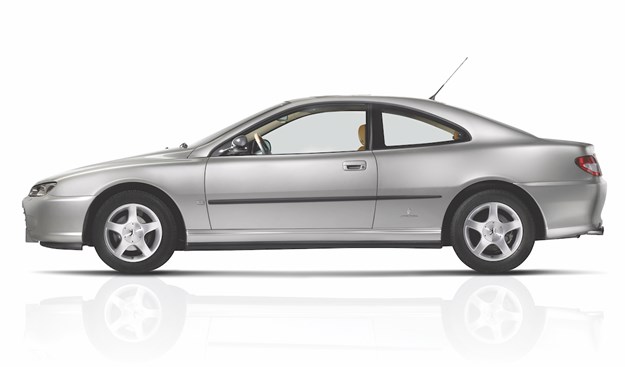
Is there an alternative to a CV8 Monaro?
But let’s just imagine that it’s the side view of the Monaro that does it for you. You know; that sweeping, rounded window line that is as much a Monaro style signature as anything else about the car. And with that in mind, allow me to offer a couple of alternatives to a CV8; cars that offer a very similar silhouette, yet will still allow a run to the grocery shop without taking out a second mortgage.
The most obvious alternative to a CV8, of course, is a CV6. Okay, so the V6 Munro has always been the poor relation, purely because the cylinder count is six and not eight. I get that, too. But there are a couple of things to remember about that.
.jpeg)
Firstly, the V6 engine is capable of covering huge distances (similar to the LS V8, in fact) if it’s maintained properly. Also, in the case of the CV6, the V6 was supercharged, so it actually goes pretty well, thanks. No, you can’t get a manual gearbox in a CV6, and it sure doesn’t have the same soundtrack but, like I said, if it’s the look you want, then a CV6 aint a bad option. And let’s not forget that, back in the day, you couldn’t give a HK, HT or HG Monaro away if it had a six-cylinder engine. Not any more folks, not any more.
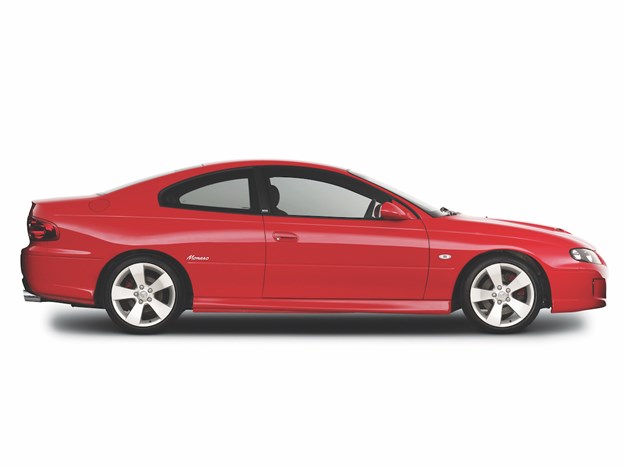
My second candidate for a visual alternative to a Monaro is the Mercedes-Benz CLK in C208 form. Man, from side on, there’s a lot of Monaro in this thing. Oh, except the CLK hit the market back in 1996, when the CV8 was still just a twinkle in Holden’s eye. So who was watching who? Okay, okay, the Monaro’s profile was somewhat dictated by the Commodore sedan’s wheelbase and overall dimensions, but the point is that the Benz two-door is a great looking car. One that lost that mojo in subsequent generations of the CLK concept.
There’s bulk choice with a CLK, too. You could have it with a piddly two-litre four-banger with just 100kW, or a supercharged 2.3-litre four with a much meatier 142kW. Then there was the 3.2-litre V6 with 162kW, the 4.3-litre V8 with 205kW and, finally, the AMG version, the CV with its 5.4 litres and 255kW.
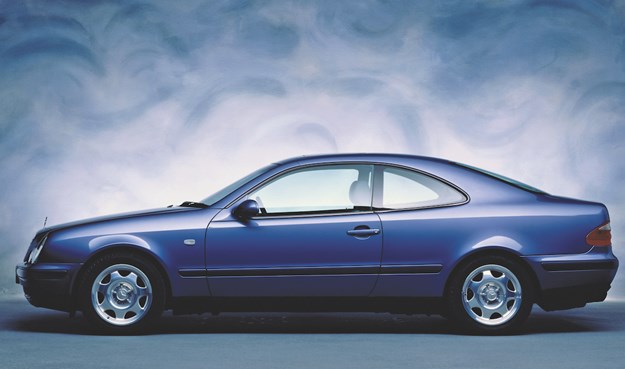
Monaroesque Mercedes-Benz CLK.
While this is one of the cheaper ways into an AMG Benz, at between $30,000 and $40,000 you’re into CV8-price territory, so that kind of defeats the purpose, right? (Cue howls of protest at comparing a Holden with an AMG Benz.) The 4.3 V8 can be a bit complicated and will leave you in the poorhouse if it goes wrong and the non-supercharged four-potter just has too little under the lid. That leaves us with either the V6 of the blown four. Your call, but I’d be looking at a supercharged 2.3 with under 150,000km and a chump-change price tag.
Watch out for faded paint, loose suspensions, jaded gearboxes, scruffy interiors and make absolutely certain that every electrical gizmo (and there are plenty of them) works perfectly. Because a dash-out repair quote is ultimately going to involve a phone call to the scrap-man.
The next contender for your hard-earned is the Peugeot 406 Coupe. Based on the duller-than-dull 406 sedan range, the Coupe was a Pininfarina job and it showed. There’s a bit of Ferrari 360 in it and it really doesn’t have a bad angle. But now take a look at the glasshouse from the side and tell me I’m wrong about that Monaro profile thing.
The sad part is that just because the Coupe was as stunning looking as the sedan was dullsville, it didn’t miss out on all the quality gaffes that were piling up at Peugeot at the time. So watch for trashed interiors and collapsed front seats, plastic bits with minds of their own and poor paint quality.
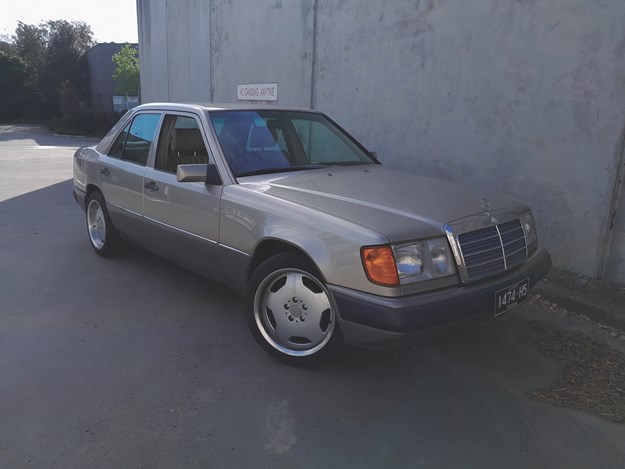
Looks the goods.
Mechanically, there’s only one way to go, and it’s a pretty specific one. While there was a four-cylinder with 100kW, the engine of choice is the 2.9-litre, 144kW V6. But, you must make sure you find one with the five-speed manual as the four-speed auto is as lifeless as midnight at the morgue. Oh, yeah, if you’re a real weirdo there was also an 82kW turbo-diesel version as well. Yeah, nah.
The swoopy 406 was sold here from 1997 to 2004, so you’d think there’d be plenty to choose from. Not so, and finding that elusive V6-manual combo might take some patience. Even then, if the looks ever wear off for you, you might decide it was all a bit of a bad idea in the first place. Still …
And guess what? With the replacement, the 407 Coupe, Peugeot totally managed to screw the pooch, turning a swan into an ugly duckling that had just been run over by a Citroen H van.
Me and my big mouth
For those playing at home, you’ll know that the W124 I rescued and got running again has become a real fun thing to have around. It’s now done an interstate run and plenty of weekend runs to who-knows-where and, aside from the initial gremlins that meant it was either I take it or it was probably going to the wreckers, it’s been superb. Hasn’t used any oil, has never overheated (nor even looked like it was getting hot) and really hasn’t put a foot wrong.
Until the other day.
Now, if you remember all that lot, you’ll also know that The Speaker has decided that the Benz is the car I own that she loathes least. Faint praise? You haven’t met The Speaker. But, I mean, she has a point: Pretty much every car I’ve ever dragged home has wound up with lowered suspension, a rowdy zorst and the potential to be driven, er, briskly. In turn, that means I’ve usually turned it into a droning, hard-riding pig of a thing, all to fulfil my need to worship at the Altar of Velocity.
But with the W124, there just didn’t seem to be much point changing anything (alloy wheels aside). Benz kinda got it right first time out with this model, and for reasons that are possibly linked to grey hair and 3am trips
to the khazi, this time around, I appreciate that fact.
However, in order to keep Mrs M interested, I promised I’d get every little thing working on the car. So I started with the air-con. Turns out, it just needed a good gassing which was ably accomplished by my local air-con shop, a moderate amount of money changed hands and the Benz is even cooler than it was.
Next was the radio. Now, the original Becker Grand Prix head unit was still in the car when I bought it, and I’d dearly love to keep it there. But every time I turned it on, all I got was a sniffle of static and bugger all else. So out it came and off to my buddy Mark who, aside from running a business called, uncryptically, Car Stereo Repairs, races a V8-powered XU-1 Torana in historic sports sedans. So you know he’s a good bloke.

I delivered the head unit to him and he started making tut-tut noises which suggests he may or may not be able to fix it. We’ll see. But at least he’ll have a go. And if possible, he’ll retro-fit the thing with Bluetooth so I can hang up on telemarketers at 100km/h.
This is the bloke who’s fixing my car radio. It’s clearly in good hands.
Meantime, the interior again looks like a bomb has hit it with bits of console and ashtray everywhere, but I was still able to move the car when I had to. And besides, with the radio fixed, I will have kept my promise to The Speaker to make everything works as it did back in 1990.
And then the odometer stopped ...
Unique Cars magazine Value Guides
Sell your car for free right here
Get your monthly fix of news, reviews and stories on the greatest cars and minds in the automotive world.
Subscribe


.jpg)


.jpg)






.jpeg)

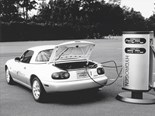
.jpg)


